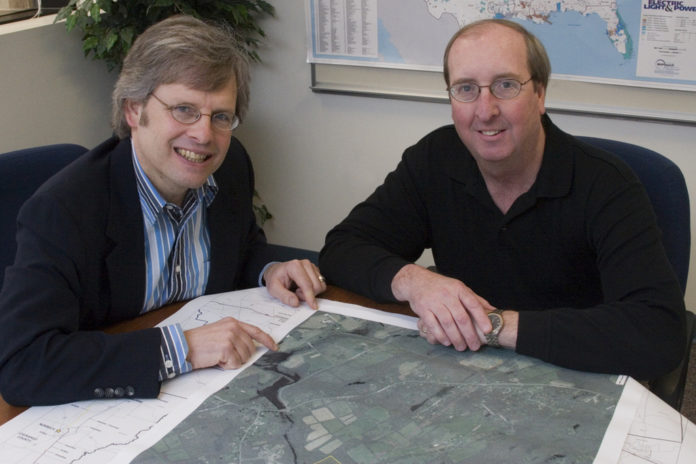
ESS Group Inc.’s work often puts it at the center of major controversies over the potential impact of large-scale power generation and transmission projects across the Northeast – including Cape Wind Associates’ hotly contested bid to build a wind farm off Cape Cod.
The firm, which has offices in East Providence and Wellesley, Mass., serves as an environmental consultant and engineer for clients such as National Grid, Connecticut Light & Power Co., Keyspan, NSTAR and AES Corp., helping them overcome objections to their plans and clear regulatory hurdles.
Right now, the company is immersed in projects involving more than 6,000 megawatts of electricity. And what drives its work is a sense of urgency.
“There is going to be some crossroad in the next – who knows – five to 10 years, where indeed if we don’t have new infrastructure, new energy facilities planned and able to be distributed to our regional grid, the lights are going to start going out,” said President and CEO Charles J. Natale Jr. “And at that point it’s going to be too late, because it takes three to five years to plan and permit these kinds of facilities.”
Such is the growth in energy demand in the region, Natale said, that Rhode Island came close to experiencing rolling brownouts last summer, and could face that possibility again this summer.
No significant new transmission lines have been built in New England in two decades, he said, causing constraints in the existing system as the region’s energy demands sharply increase. Rhode Island’s electricity demand is growing at about 2 percent per year, and that load growth increases to almost 4 percent during summer heat waves, Natale said.
The slow process of bringing new energy infrastructure online is exacerbated by routinely long, complex permitting processes often impacted by opposition from neighbors and other stakeholders, Natale said.
A prime example how energy projects can be delayed and sometimes derailed by stakeholder opposition is the Cape Wind Renewable Energy Project, which has faced organized, well-financed opposition from Cape Cod residents, and regulatory oversight that was shifted in 2005 from one federal agency to another, adding another two years to the project’s permitting process.
That project, which calls for the development of 130 wind turbines in Nantucket Sound capable of generating 454 megawatts of power, would be one of the largest offshore wind power generation facilities in the world.
ESS, which conducted all of the Cape Wind project’s environmental research, jumped a significant hurdle on March 30, when the Massachusetts secretary of environmental affairs ruled that ESS’ final environmental impact report for the project was adequate.
And while opposition to Cape Wind is especially intense, challenges to energy are common across the region, said Christopher G. Rein, principal and senior vice president of energy and industrial services at ESS.
ESS is an engineer and consultant on the ongoing New York Regional Interconnection Project. The developer, New York Transmission Company LLC, originally planned to build a 360-mile transmission line from upper New York State to New York City, to move up to 1,200 megawatts of much-needed power from Canada and northern New York to New York City. But the project’s route, which is currently being reviewed by regulators, had to be scaled back to 190 miles and relocated in some parts to avoid high-population areas.
But Stephen B. Wood, a vice president in ESS’ energy and industrial services department, said there are a handful of major transmission projects in the queue in the New England ISO that would bring more electricity to constrained areas in Rhode Island, Massachusetts and Connecticut.
To a large extent, such projects are the result of deregulation of the energy markets, which has stimulated significant investment in long-term energy projects by hedge funds and other private investors, Natale said.
“The equity markets were not that interested in investing in the energy sector, and now that has changed dramatically,” he said.
Given the need for new transmission infrastructure that spans several states and allows the entire region to better share electricity, and the difficulty that private developers have acquiring the land needed to build such projects, an increasing number of developers are seeking to lay their pipes across water rather than land, Rein said.
ESS worked on one of the first significant transmission projects that involved a submarine component, and it is currently involved in others, Rein said.
TransEnergie U.S. Ltd.’s Cross Sound Cable Project, for which ESS provided full environmental and regulatory services, laid electric cables from New Haven, Conn., to Brookhaven, N.Y., across the Long Island Sound, enabling those populous areas to better share electricity. The cable system, which was installed in 2002, was the first merchant electric transmission line constructed in the nation.












